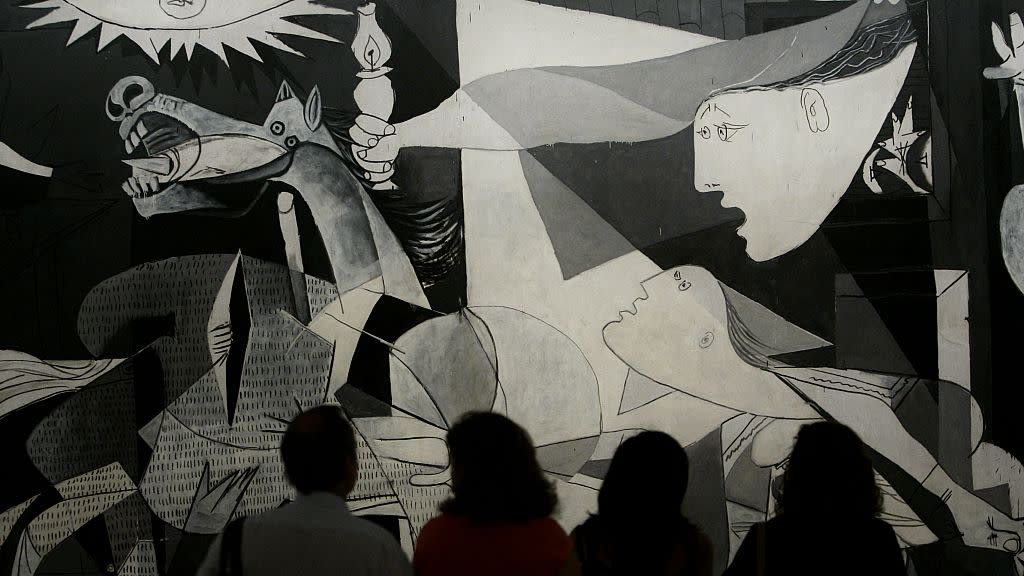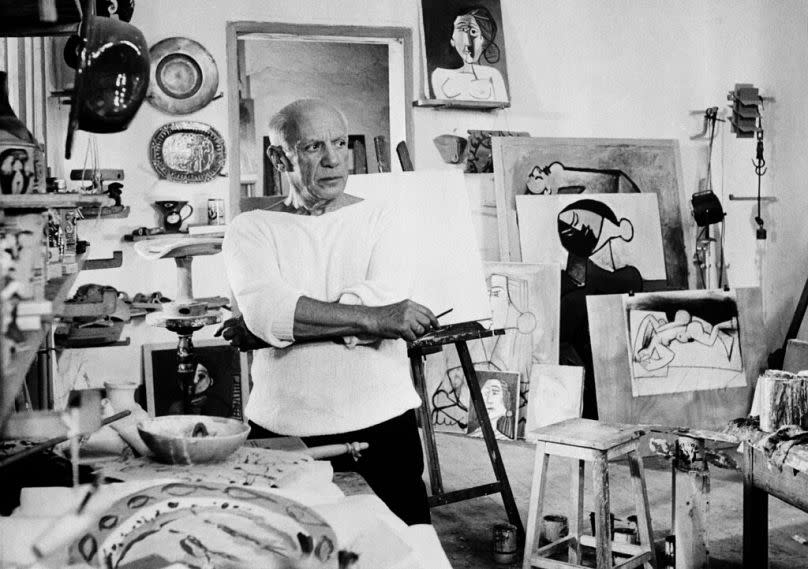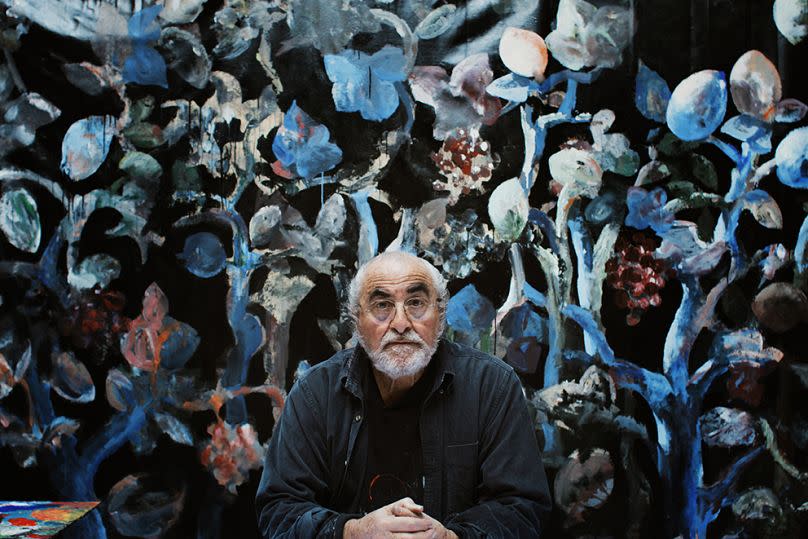An Italian artist is attempting to recreate Picasso’s “Guernica” in less than a fortnight

When the Nazis decided to wade into the Spanish Civil War in 1937 in support of their fascist ally Francisco Franco, they did so by dropping bombs indiscriminately on the Basque town of Guernica.
No distinction was made by those flying overhead between civilians and militants: many hundreds died, most of them women and children.
It was a bitter foretaste of what was to come. In the years which followed, civilian bombing became a hallmark of the changing face of modern warfare, the term blitzkrieg soon entering international parlance.
An artist bears witness
Observing these events unfold in the press from his studio in Paris, the Spanish artist Pablo Picasso could already foresee, perhaps, this gathering ubiquity, this newly everyday terror of violence.
In response to the carnage of Guernica, Picasso set about creating what was to become perhaps his greatest work, an enormous monochrome hellscape on canvas named after the town itself.
At the time (Guernica was displayed at the 1937 Paris World’s Fair) it made an immediate impact on international feeling around the Spanish Civil War. In the years since, Picasso’s Guernica has become an immovable waystone in the history of anti-war art, its reach of influence singularly wide.

Something that probably helped the piece reach such a pinnacle of cultural visibility is the way Guernica was exhibited. It went on tour for two years, before taking shelter during the war in New York’s MoMA.
This is where it remained until Picasso made an intervention in 1953 to have the enormous canvas put on show around the world again.
One stop on the ensuing global tour of the piece was the Palazzo Reale in Milan. The museum’s Caryatids Hall, still at that time in a state of roofless, bomb-stricken disrepair, formed an appropriately ruinous setting for the enormous anti-war canvas.
A new twist in the tale
Guernica now resides in Madrid, at the Spanish capital’s Reina Sofía museum. But seven decades after the original left Milan, another Guernica now is taking shape again in the Palazzo Reale’s Caryatids Hall.
That's because Italian artist Ercole Pignatelli, who first saw Guernica at the age of 18 during its Milan exhibition, has just embarked upon a durational performance piece based around recreating and reinterpreting Picasso’s masterpiece before a live audience.

Now 89, Pignatelli’s lifelong rumination on the work is being brought out in a pen and paint improvisation at the same grand scale as the original. His 3.49 x 7.77 metre canvas has been set up in the Caryatids Hall opposite an equally sized copy of Picasso’s Guernica for him to draw and paint in dialogue with.
The intervention, which began on Friday (3 May) and is expected to finish on 16 May, is being staged as part of a wider exhibition and retrospective on Pignatelli’s oeuvre titled Memento Amare Semper (Always Remember to Love), featuring 15 large-scale works completed earlier in the artist’s career, and members of the public are invited and encouraged to come and watch him at work on this latest undertaking.
As part of the recreation, Pignatelli is not aiming for a perfect imitation, telling the Times that he plans to introduce motifs of hope to the original, as well as ending his performance by painting the sky pink to symbolise a “dawn of hope”.
But in a world which has never stopped reproducing the tragedy which befell the town of Guernica, with countless civilians killed and wounded since 1937 in obscene urban bombing campaigns, will this latest iteration of Picasso’s work end up speaking to renewed hope, or serve instead to underscore the sorry continuum of human brutality?
The performance will run until 16 May at Palazzo Reale, Milan. Tickets are free, with no reservations necessary. Consult the venue's website for opening hours.


